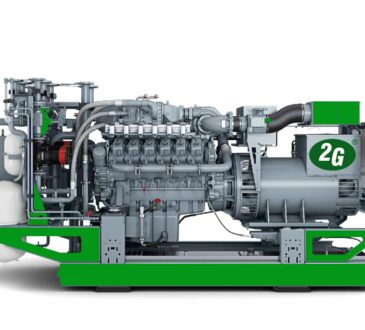Understanding how corporate PPAs are influencing the energy transition
Corporate power purchase agreements (PPAs) have enabled significant growth in the commercial and industrial renewable power supply space, influencing final investment decisions from developers and investors looking to construct new renewable energy assets.
Big tech companies are some of the biggest purchasers of PPAs. Amazon, Microsoft, and Meta were the top three largest corporate buyers of renewable energy through PPAs in 2021, with roughly 14.5 gigawatts secured between the three companies.
According to Bill Kentrup, co-founder and head of origination at Allinfra, solar is the predominant solution for on-site or rooftop renewables under PPA, while wind – both onshore and offshore – plays a material role in markets that allow for direct PPAs with corporates for off-site renewables that utilise the prevailing grid. In China where factories can be quite enormous, on-site rooftop solar with direct PPAs has been a big driver for renewable growth in the country, and it is common to see rooftops with three to five megawatts (MW) of installed solar potential.
Given factories in many other Asia-Pacific countries are much smaller than those in China, generation that is off-site from the facility that is purchasing the power under a corporate PPA tends to play a larger role relative to rooftop generation.
Location, location, location
John Dallimore, head of corporate PPAs at Pexapark, says that, traditionally, companies will purchase PPAs in the same market as their energy demand. However, cross-border PPAs – which share energy across national borders – are becoming more commonplace.
“This is something we are seeing increasingly, particularly among corporates and industrials that have energy demand in Eastern European countries that have variable levels of liquidity, or that have the availability of projects in mature power markets to source large PPAs, such as Austria or Germany, which can then supply their operations in the East.”
Kentrup, however, asserts that having supply and demand proximate to each other leads to better power supply and demand planning (including policy, incentives, etc.), improved ability to match contract pricing terms to local conditions, and better operations.
“Sizing on-site or localised supply to current and planned localised demand better avoids grids being overloaded in terms of power supply relative to demand and reduces risk of grid interruption,” explains Kentrup. “It is possible to enter into PPAs with suppliers who are dispatching power to other grids, and even from other jurisdictions or countries, though the differentiated commercial and regulatory environmental affecting power supplier and buyer can lead to increased risk.
“In addition, it should be noted that the separation of the source of supply and commercial terms for the underlying power versus the source and terms of the ‘environmental attributes’ are separated in many markets. As such, the purchase of power under any PPA may separate out the environmental attributes, which in turn may be sold separately as renewable energy certificates and/or carbon credits, and increasingly as digitally tracked environmental attribute claims.”
Regulating the PPA market
Given the surge in PPA procurement, there needs to be some method of accounting and regulation. Kentrup says that, for PPAs involving on-site solar, there tend to be regulations and legal frameworks that enable this model to exist, but the PPAs themselves are often bilaterally negotiated between supplier and buyer, with clauses relating to contract duration, commercial terms, site access, ownership of ‘environmental attributes’, responsibility for damage to premises, etc., all being negotiated case-by-case. The PPAs themselves are then enforceable contracts between supplier and buyer.
“Early on in such a market, it can be quite time and cost-intensive to negotiate these bilateral PPAs, although over time you do tend to find PPAs converge around a ‘market standard’,” Kentrup continues.
“In cases involving off-site renewables that dispatch to the local grid (run by a third-party utility or grid operator), the suite of contracts must deal with the rights and obligations of the power producer, the power buyer and the grid operator. Because of this, the regulations and legal framework to enable the framework amongst three or more stakeholders is more complex, and the PPAs between power producer and buyer must also contemplate responsibility and risk-allocation between the two parties, in relation to the role of the grid operator. Issues such as delays getting supply connected to the grid (due to delays of the grid operators), interruptions to grid operation at any time, or changes in regulations and law that impact tolling arrangements with the grid, all need to at least be contemplated when agreeing the PPA between power seller and buyer, if not drafted for in detail.”
Despite this recognised framework, there are at present no global standards set for PPA procurement, and even in developed markets, like the US for example, PPAs will differ state-to-state. This is partly due to a myriad of differing factors between nations, such as regulatory, legal, and cultural differences, as well as ensuring the risk allocation under PPAs matches requirements of local banks, insurers and other service providers.
“There is a degree of pull toward a global standard to the extent that very large, global power consumers, like big tech and data firms, or consumer goods manufacturers, are trying to bring all their global PPAs – which may exist in tens of countries for some large firms – to within a reasonable degree of similarity and risk-allocation,” says Kentrup. But certainly, this is not the beginning of a move toward a standardised global metric.
Will energy market volatility affect PPAs long term?
With recent geopolitical events causing marked instability in energy markets and supply chains – particularly in Europe – the PPA market has also felt turbulence. Given the potential of continued disruption, Kentrup observes that it is a little too early to tell the extent of the impact it will have on the PPA market long-term. However, as corporates evaluate energy stability risk across all the regions they operate in, and how they procure power and allocate risk under PPAs, current energy market volatility is certainly something they are keeping in mind.
“Apart from adjustments to their overall operating footprint, potentially shifting their current or future asset base from one country to another, I would anticipate that ‘captive’ on-site power supply, including rooftop and ground-mounted supply within the boundary of the corporate’s property may increase in relative terms,” concludes Kentrup. “I would also extend that to say that on-site supply of other utilities, including geothermal heating and cooling, as well as energy efficiency measures and energy storage will also grow as they all reduce the risk to business interruption as energy markets at large are impacted by geopolitical changes.”
Dallimore agrees. He says that events last year are likely to mean that the risk profile is going to dampen utility and trader appetite for long term PPAs for the foreseeable future. However, among corporates and industrials, the demand should continue to keep going, with many opting for PPAs covering shorter terms.
“If you look at one of the biggest corporate buyers last year – Alcoa, a large industrial corporation producing aluminium – they were one of the largest buyers in Spain, but they have been curtailing their output since the end of 2021 due to energy costs,” reveals Dallimore. “I think we will continue to see this curtailment until their PPAs come online. So therefore, those industries which have a large part of their cost basis exposed to the energy market are going to keep drive for PPAs.”
With corporate PPA procurement showing no signs of slowing down soon, it is up to investors to weigh up their options to ensure they secure the right commercial structure, ensure risk is allocated fairly between buyer and seller, and optimise their PPA revenue.




